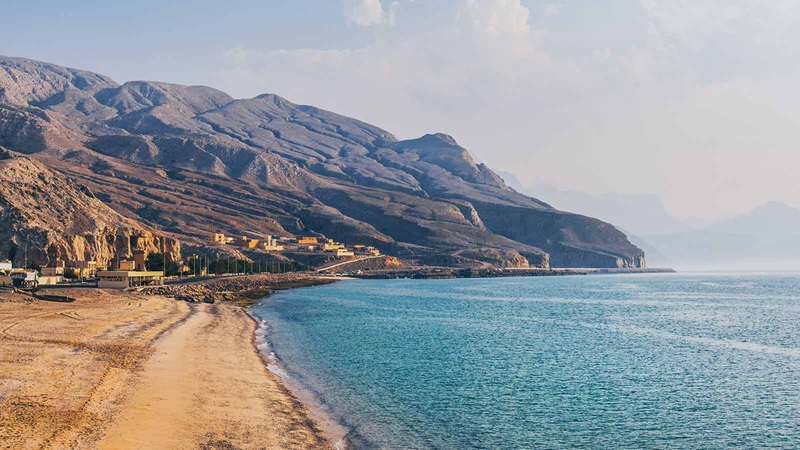Perspectives
Building far away from civilisation: four tips for working remotely
Delivering complex construction solutions is never straightforward – but it is particularly challenging when you’re building in a remote location, far away from access to basic services and settlements.
Although digital technology has transformed how we work across the world, it can still be very difficult to deliver construction projects in places without access to good transport infrastructure, healthcare and accommodation.Mace’s Country Manager for Oman, Naveed Haque, has helped to build some iconic projects in his time – and he’s also helped to set up successful teams to deliver construction schemes in remote locations; from the edge of the desert to remote islands.
In this article, we explore some of the challenges that make remote working so difficult – and how those issues can be overcome.
1. How do you and your materials get to site?
Travelling to site is a basic requirement of any project but can be a huge challenge when working remotely. Can the roads leading to the site deal with the traffic? What about heavy construction vehicles? What plans are in place if routes are blocked?
Even in remote parts of the UK – let alone in the middle of a desert or on a small island – travel to site can be a challenge. Can you build temporary workers' accommodation near the site? How does that change your labour requirements?
As always with complex construction projects, the key is careful planning and ensuring your proposed approach is resilient. Building in the capacity for route changes and delays to materials is key – but most importantly you must set clear expectations between all parties.
As long as your client is engaged appropriately and recognises the risks you will find it easier to work with them if something does go wrong.
2. What are the unique health, safety and wellbeing risks?
Health, safety and wellbeing should be our highest priority when working on any projects – and the first step is identifying the specific risks and challenges that you face.
When working remotely, you are likely to face unique challenges that require complex solutions. What happens if someone gets hurt? How do you ensure your materials are secure?
You may require additional medical or health facilities to be located on site, and emergency evacuation plans will need to be carefully drawn up and tested. There are a number of new digital technologies that can help deliver risk mitigation – but have you scoped out the right tools?
It’s also more likely in a remote location that you’ll be working in hazardous conditions. Every environment carries its own risks – from the desert to remote islands and windswept beaches.
Careful planning and integration with the supply chain will mean that these risks can be identified early on and mitigated effectively.
3. What do you need to know about the local area?
Every project we deliver is unique and brings together different parties that might have never worked together before. Knowing the local supply chain, market and resources, is vital when delivering projects in well-connected areas – it’s even more important in a remote place.
Before starting work in a remote location, knowing local providers and the availability of resources can help you get the logistics right. Your best connected and easy to reach options are your safest bet, so make sure you are aware of them and integrate them in your plan.
An understanding of local supply chains and resources to intervene when issues arise, for example, can be the factor that ensures the project is delivered on time. Unexpected delays or significant disruptions in the transport of materials don’t have to bring work to a standstill if you understand market dynamics and know what your options are.
Avoiding project delays is a top priority, and in a remote location you need to think ahead - take your time to research the area, its resources, and lay out a plan to help you prepare for any surprises.
4. How to get your new staff ready for the challenge?
On boarding new staff in a well-connected location can be a challenge in itself. Adjusting to a new workplace location is part of the experience for some new starters. But how do you prepare those starting a new job in a remote place?
Clear direction to new staff before on boarding is even more important than usual when working in remote locations. You want to make sure they know how to get to work and that they have appropriate accommodation. New starters have to know what to expect, such as working standards, accommodation, travel, dining arrangements, leisure facilities and healthcare provisions.
Sharing an introduction pack with all the information on local travel options, accommodation and healthcare facilities, as well as a couple of useful tips, can ensure your new starters make it safely to work and back from day one – and that they enjoy the experience. It's important to schedule regular check-ins with anyone working in remote locations, too.
As the world gets smaller, the opportunities to travel and see new places get bigger. In the Middle East we’ve seen a growth in mega projects to welcome tourists and we are increasingly managing projects with complex logistical requirements.
But these challenges equally apply to building a new power plant in a remote part of Cumbria in the UK as it does to building a hotel in the Seychelles or Saudi Arabia. While all construction projects will have degrees of complexity, building in remote locations adds another layer that will require careful and thorough forward planning to ensure success.












